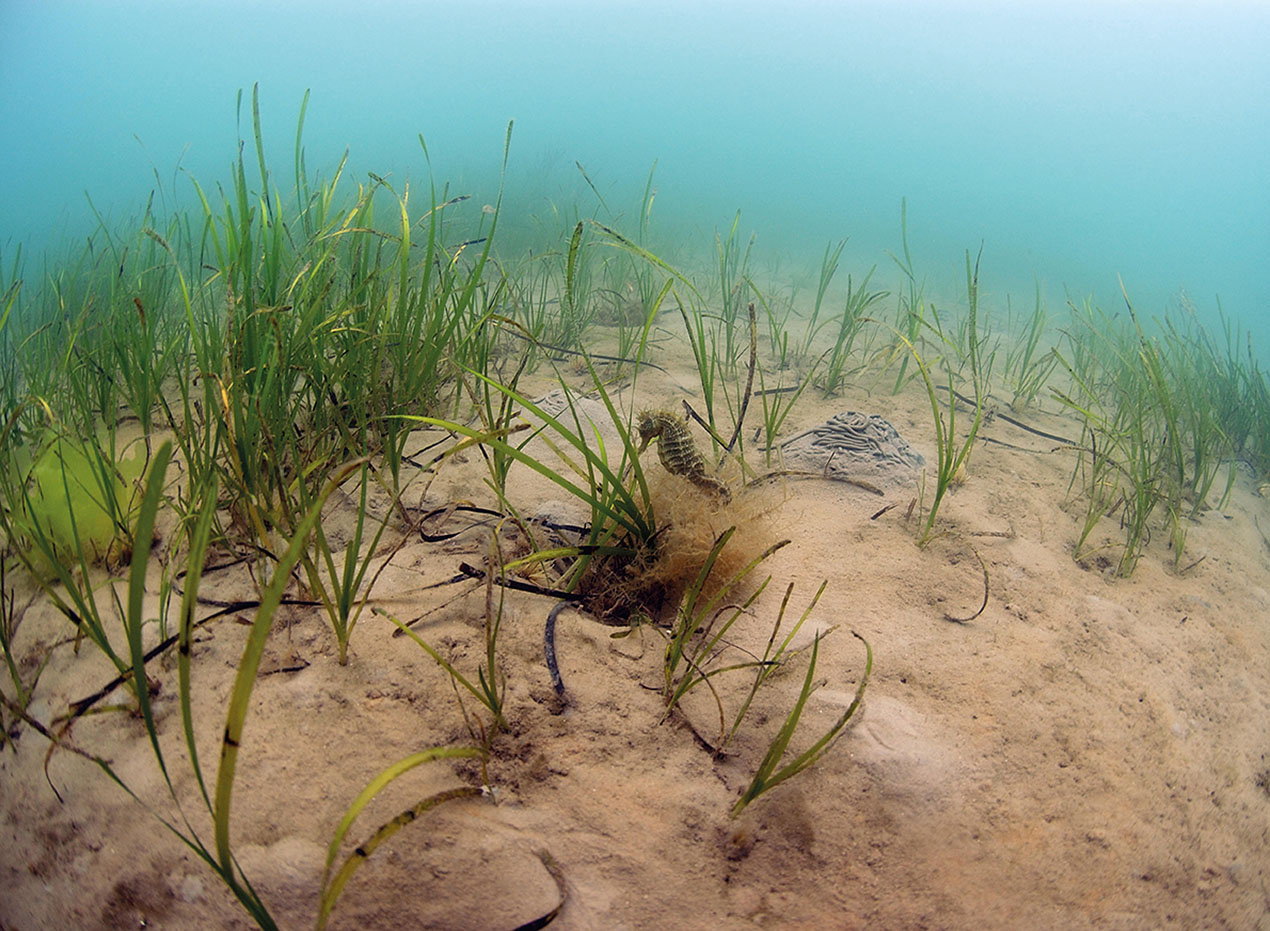Pilot’s new lessons for ‘nursery for fish’
Seed planted to restore coastal sea meadows
The words “sea meadows” conjure up a fantasy underwater world of emerald green fields grazed by creatures of the deep, perhaps something from Jules Verne’s Twenty Thousand Leagues Under the Sea. But sea meadows are real, and while you may not find anything more exotic than a seahorse or spider crab feeding there, in the UK they are in danger of disappearing.
More than 90 per cent of seagrasses, which closely resemble the plants found in terrestrial meadowland but millions of years ago evolved to survive in salt water, have vanished from our coastline since Victorian times, mostly because of industrialisation and damage from boats. Also blighted have been many salt marshes, mussel reefs and oyster beds.
“And yet we continue to trawl the seabed and destroy anything that’s left,” said Richard Unsworth of Swansea University. “We need to reverse this. We spend a lot of time arguing about fishing quotas but the underlying problem is that we’re devastating the biodiversity that supports the fish. It’s no longer about catching too much fish – it’s about destroying our seabeds.”
Unsworth is director of a charity called Project Seagrass, which hopes to restore now-barren seabeds by planting new sea meadows. A pilot scheme has involved collecting seeds from Porthdinllaen on the Llŷn Peninsula of North Wales and planting them at Dale Bay on the Pembrokeshire coast. The experimental sea meadow is the size of a couple of rugby pitches, but Unsworth hopes its success will lead to planting on a much bigger scale along the Welsh and west coasts of the UK.
Some sea meadows have survived along the Irish Sea coast, from Wales to Lancashire and Cumbria, as well as in Devon and Cornwall, and are especially prevalent in the Scottish sea lochs since they thrive in sheltered coves, lagoons and estuaries.
“One of the things that seagrass has struggled with over the years is a lack of appreciation for what it is,” Unsworth said. “There’s a perception that it’s not important, a funny green habitat that’s not very exciting. But the benefits from having healthy seagrass are huge. You get 30 to 40 times more animal life relative to a bare sea floor – everything from small shrimps to cuttlefish, mussels, sea insects, crabs and lobsters. It protects young cod, whiting, plaice and pollock.
“Think of it like this – do you leave small children out in the street or put them in a nursery? Seagrass is a nursery for fish.”
But seagrass doesn’t just benefit marine life. It is now known to take carbon from the atmosphere in the fight to stop global warming. According to Project Seagrass it absorbs carbon up to 35 times faster than tropical rainforests and locks it up for thousands of years. It also filters out pollution, and helps to reduce coastal erosion by dissipating the energy of waves.
The pilot scheme by Project Seagrass, with backing from the World Wildlife Fund, Sky Ocean Rescue and Pembrokeshire Coastal Forum, involves separating the seeds at an aquarium in Swansea, then mixing them with sand and putting them into small hessian bags which are then tied to the sea floor with biodegradable sisal rope.
Project Seagrass is building on work done in Chesapeake Bay, the largest estuary in the US, where over the last few decades a large area of sea floor has been replanted. Scientists there have reported a big reduction in pollution. The same thing has happened in Tampa Bay, Florida.
The next phase in the UK will be to try to vastly upscale the planting with the use of an underwater seed planting machine, and Unsworth hopes to establish 30 square kilometres of seagrass over the next decade. “Think of it as moving from an allotment to an agricultural operation,” he said.
Image: Long-snouted seahorses are among creatures that live in seagrass meadows in Eelgrass, Dorset. (Alamy)

Leave a reply
Your email address will not be published.